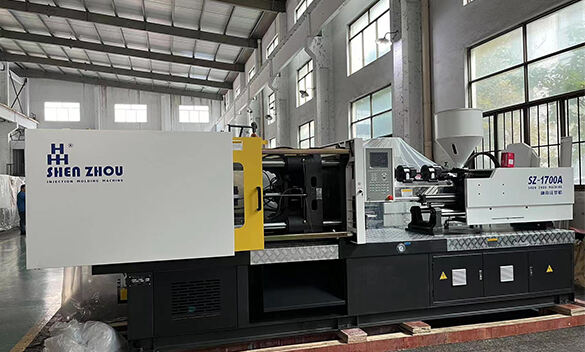Selecting the appropriate injection molding machine is a critical decision for any manufacturer. Consider the story of a small manufacturing company that faced challenges in producing high-quality plastic parts because they initially chose the wrong machine. Their production was inefficient, and they experienced high defect rates. By taking the time to evaluate their needs and understanding the machine specifications, they invested in the right equipment, which resulted in higher productivity and reduced waste, ultimately boosting their profitability.Choosing the right injection molding machine involves understanding various factors, including the type of materials used, the desired production volume, and the complexity of the parts to be produced. To choose the right injection molding machine, you need to evaluate machine specifications, consider production needs, and assess future scalability. These considerations ensure that your investment is sound and aligns with your long-term production goals.Understanding Machine SpecificationsThe first step in choosing an injection molding machine is to understand the key specifications that define its capabilities. These include clamping force, shot size, injection pressure, and platen size.Clamping Force: The clamping force is measured in tons and refers to the machine's ability to keep the mold closed during the injection process. The force required depends on the size of the part and the material being used. Generally, larger parts and harder materials require higher clamping force.Shot Size: This specification indicates the maximum amount of material the machine can inject in one cycle. It is crucial to select a machine with an appropriate shot size that matches the volume of the parts you intend to produce. An oversized shot size can lead to material waste, while an undersized shot size can result in incomplete parts.Injection Pressure: The injection pressure defines how forcefully the machine can push the molten material into the mold. Higher pressure is necessary for intricate parts with fine details or when dealing with certain materials that are harder to inject.Platen Size: The size of the platens (the plates that hold the mold) is also important. Ensure the machine's platens are large enough to accommodate your molds with adequate space for ejector pins and cooling lines.Material ConsiderationsDifferent materials have unique properties that can affect the injection molding process. Before selecting a machine, it’s essential to consider the type of plastic you will be working with.Thermoplastics vs. Thermosetting Plastics: Thermoplastics, which can be melted and reshaped multiple times, are commonly used in injection molding. Thermosetting plastics, on the other hand, undergo a curing process that makes them set permanently, requiring specific machines capable of handling these materials.Viscosity of Material: Material viscosity affects how easily it flows into the mold. Machines with higher injection pressures may be necessary for high-viscosity materials. Understanding the rheological properties of your chosen material helps in selecting a machine that can handle it effectively.Additives and Fillers: Some materials include additives or fillers that can affect the molding process. For example, reinforcing agents like glass fibers can increase the wear and tear on the machine’s components. Machines with reinforced components or specialized screws might be necessary for these materials.Production RequirementsProduction requirements are another critical factor in the decision-making process. Consider the following aspects:Cycle Time: The cycle time, or the time it takes to complete one cycle of injection molding, impacts overall production efficiency. If you need high-volume production, select a machine with a fast cycle time to boost productivity.Precision and Quality: High-precision parts require machines with tighter control over temperature, pressure, and injection speed. Machines with advanced control systems can produce parts with high accuracy and consistent quality.Automation Potential: Investing in machines compatible with automation systems can streamline production, reduce labor costs, and increase efficiency. Look for machines that can integrate with robots or other automated handling systems.Future ScalabilityWhen choosing an injection molding machine, it's also wise to think about future scalability. Your production needs might grow or change, and having a machine that can adapt can save you from having to invest in additional equipment.Modularity: Some machines offer modular components that can be upgraded or changed as needed. For example, you might start with a basic machine and later add features like additional injection units or automated handling systems as your production expands.Machine Versatility: A machine that can handle a range of materials and part sizes offers flexibility. It can be advantageous if you plan to diversify your product line or work with different materials in the future.Key Features to ConsiderFinally, when choosing an injection molding machine, be sure to evaluate specific features that can enhance performance and ease of use.Energy Efficiency: Energy-efficient machines can reduce operational costs in the long run. Look for machines with features like variable frequency drives (VFDs) that optimize energy consumption.User-Friendly Interface: A machine with an intuitive and user-friendly interface can minimize the learning curve for operators, reducing training time and minimizing errors.Maintenance and Support: Consider the availability of technical support and the ease of maintenance for the machines. Machines with readily available spare parts and responsive customer service can reduce downtime and keep your operations running smoothly.In conclusion, choosing the right injection molding machine involves a thorough analysis of your production needs, material characteristics, machine specifications, and future scalability. By carefully evaluating these factors, you can make an informed decision that aligns with your business goals, ensuring efficiency and cost-effectiveness in the long term.FAQWhat factors should I consider when selecting an injection molding machine?Evaluate machine specifications, material properties, production requirements, and future scalability.Why is clamping force important in an injection molding machine?Clamping force keeps the mold closed during injection, preventing defects and ensuring quality.How does material viscosity affect the injection molding process?Higher viscosity materials require higher injection pressure to fill the mold accurately.Is automation possible in injection molding processes?Yes, many machines can integrate with automation systems to enhance efficiency and reduce labor costs.What is the advantage of modular injection molding machines?Modular machines offer flexibility for upgrades and adaptations as production needs change.By understanding and considering these elements, you will be well-equipped to select the ideal injection molding machine for your manufacturing needs.



